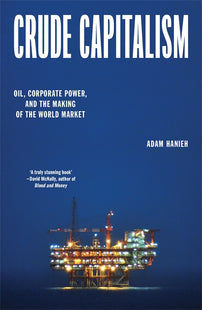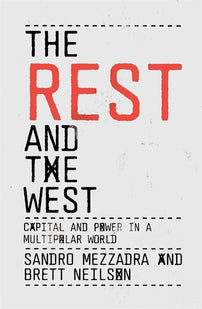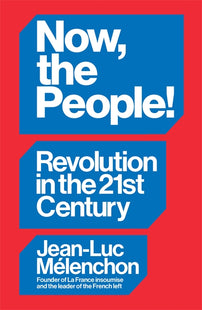The Coming Post-Hegemonic World
Michael Hardt and Sandro Mezzadra discuss the reformation of global power relations and the rising internationalist movement for liberation.

The institutions of soft power and the other tools that had previously supported US global hegemony are rapidly being discarded by the second Trump administration. Even the pretense of defending democracy, championing human rights, and protecting freedom has been completely relinquished. This does not imply, however, a turn towards isolation, but represents, instead, the first steps toward a post-hegemonic model that may characterize global power relations in the coming era.
This tendency is grasped most clearly by focusing on two levels at which global maps are being redrawn: on one hand, the world market and the spaces of capitalist production and circulation are being transformed; and, on the other, political boundaries are being reorganized, through renewed processes of territorial expansion and annexation. The dynamic between these two remapping processes, in which political boundaries and the divisions of the world market sometimes coincide and sometimes diverge, reveals the principal lines of the new global arrangement in formation. And this entire process proceeds hand-in-hand with the unfolding of a seemingly never-ending war regime, including both trade wars and military conflagrations.
[book-strip index="2"]
Overlapping maps of global spaces
At the time of Russia’s 2014 conquest of Crimea and still at the time of its full-fledged 2022 invasion of Ukraine, it seemed that Putin’s brutal and autocratic regime’s tactic of territorial expansion was a throw-back to long surpassed international power plays and an exception that could be contained. Today, however, after Israel’s territorial conquests, not only in Gaza and the West Bank, but also Lebanon, Syria, and perhaps beyond, and, moreover, with Trump’s threats to annex Greenland, Canada, the Panama Canal, and even Gaza, the paradigm of territorial conquest seems to have been if not normalized at least consolidated. Anders Stephanson rightly links Trump’s projects (or fantasies) of territorial expansion to the longstanding US tradition of manifest destiny, but we need to consider this phenomenon also in a larger frame. The fact that the spaces of the world map are once again in flux and up for grabs is an essential aspect of the reorganization of global spaces currently underway.
At the same time, tariffs and trade wars are wielded as weapons to reorganize the boundaries and conditions of the world market, despite the risk of inflation, financial and economic turmoil, and even recession in the US. In this arena, too, Trump is making clear that the practices of US hegemony have been ruled out.
The capitalist world system has often accommodated disjunctions between these sets of shifting boundaries – national borders and capitalist frontiers – but in some respects the actions of Trump, Putin, and Netanyahu are bringing them closer together and making them overlap. Although this tendency may, while benefiting specific fractions of capital, restrict the general scope of economic developments and profits, it does correspond, in certain respects, to classical theories of imperialism in the early twentieth century. It remains to be seen whether the contemporary capitalist formations, which weave together industrial and financial capital in a different way, are still adequately described by the term imperialism.
The Atlantic Divide
The reorganizations of both the world market and political boundaries precipitated by the Ukraine War extend well beyond the two countries directly involved. Since the beginning of the Russian invasion, it has been clear that, in addition to Ukraine, Europe is destined to be the big loser. US actions, despite their vicissitudes, have consistently functioned to subordinate Europe, perhaps not as a conscious plan but nonetheless an objective tendency. On the surface, there was a radical shift from the Biden administration’s support of Ukraine and affirmation of NATO to Trump’s siding with Putin, withdrawing military support and denigrating NATO. Whereas the former effectively subordinated Europe within the Atlantic Alliance, and the latter even further undermines Europe as a unified political and economic actor, not severing US links with the old continent, but rather aiming at reorganizing relations on the basis of new hierarchies and relations of force.
A leap forward in European integration appears to be on the table but under conditions of political fragility and facing the constant threat of an increasingly self-assured fascist right. The long-discussed “strategic autonomy” of Europe is finally being formulated but simply as a massive rearmament plan, constructing a new military-industrial complex, which will rely, inevitably, on US and Israeli arms manufacturers.
Precisely those European political leaders, particularly in Germany, who have most strictly insisted on budget limits and debt brakes are now advocating strongly to abandon such restraints for military expenditures. Ironically, whereas previously budget “responsibility” was tied to austerity policies, going beyond budget limits now means even more severe austerity with respect to social welfare. Moreover, European designs coincide with a global trend toward a “war regime” in which economic, technological, and scientific development is driven by security and military logics. At the same time, the “ReArm Europe” plan’s increase of national military expenditures serves as a complement to the long-term strategy of fortifying borders and repatriating migrants.
Trump’s efforts to reestablish “normal” relations with Russia, while cutting off Ukraine and sidelining Europe, raise several suggestive historical parallels. The image of a new Yalta, for instance, highlights the military (and nuclear) risks of the current situation, and seeing this as an (inverted) repetition of Nixon’s plan to separate China from the USSR could emphasize how deep and difficult to separate are the current economic relations between Russia and China.
We see the situation more clearly, however, when we view the current actions of the US and other states as efforts to reorganize the spaces of the world market, often in conjunction with struggles over political borders. From this perspective we can see that we are at a turning point in the history of the capitalist world system.
[book-strip index="1"]
The map of the Middle East
The set of conflicts in the Middle East are in several respects more complex than that in Ukraine and they are still in flux. Here, too, economic interests, although important, do not fully explain the situation. Gaza clearly is a central piece, and Trump’s fantasy of appropriating the land, expelling the populations, and transforming the strip is indicative of a larger reality. Oil, of course, plays an important role in all political clashes in the Middle East, but not necessarily in the way often imagined. Although the US does not presently have great need for Gulf oil for domestic consumption, it nonetheless has great strategic interest in the access to oil of its competitors, such as China.
The region has long been a logistical hub with a history of intense conflicts, dating to well before the 1956 Suez Canal crisis, and struggles over logistical infrastructures are once again emerging at center stage. The Abraham Accords, for instance, and the planned India – Middle East – Europe corridor not only highlight the importance of the territorial control of Palestine but also draws Saudi Arabia and other Gulf States into the project. The competition over logistical infrastructures dovetails with struggles for the control of resources and their distribution, which necessarily have a regional dimension, involving, for instance, the Iraq Development Road and the so-called Middle Corridor that would connect Turkey with China.
The specter and reality of war hangs over all these processes. Although stability and security of both the great logistical infrastructure projects and the extraction and distribution of resources are predicated on an effective and lasting pacification of the region, transforming deep, longstanding antagonisms, the only path offered by the US and Israel toward pacification requires a permanent state of war, supported by fear, threats, and violence. War and trade, of course, have long been deeply intertwined, and not only in this region. We understand the fact that the war regime is a necessary condition for economic development here, especially considering the strategic relevance of the Middle East for the global distribution of power and wealth, to be a symptom of the limits that currently haunt the reorganization of global spaces and consequently of the capitalist world market. And the dystopic vision of a Gaza turned into the “Riviera of the Middle East” reminds us not only of Israeli’s genocidal practices of destruction in the strip, but also of the plunder and dispossession that accompany the projection of US global power. Under these conditions, Palestine continues therefore to be the name of resistance.
The post-hegemony tendency
It may appear that the present moment, with trade wars in full swing, marks the end of the era of globalization, but that really represents a misunderstanding of what globalization has been. The world market has never been and never will be an Eden of free trade with smooth spaces of circulation. In the tendency to create the world market, to recall Marx’s dictum in the Grundrisse, “every limit appears as an obstacle to be overcome.” The current moment is characterized by a proliferation of limits to the expansion of the capitalist world market, which results in a set of fractures and disruptions. The nature of the obstacles and the manners in which they will be overcome can take different forms, and precisely from this vantage point the relation between capital and territorial configurations becomes particularly important. The world market is always, by necessity, politically constructed and organized. The disruptions of the world market in recent decades, through the 2008 crisis, the pandemic, and the various wars, whether in the battlefields or through sanctions and tariffs, emphasize the essential features of the world market itself. The fundamental task is to identify the key barriers and the attempts to manage or overcome them. We do not want to reduce the wars in Ukraine, Palestine, and elsewhere to the dynamics of the world market, but this is, nonetheless, one terrain on which the wars are being played out.
Today, we are facing the possibility of a global system that is not organized by a hegemonic power, in the way that Giovanni Arrighi and many others understood it. The abandonment by the United States of the tools of hegemonic organization does not necessarily mean that another nation-state will take up that mantle. The question appears, then, whether such a nonhegemonic project can be effective and lasting. For now, a centrifugal and conflictive multipolarity seems to be an adequate description of the state of the world. From this perspective, a continuing or even permanent war regime begins to appear as a necessary component of both the organization of the world market and the conditions of capitalist development. The capitalist world has always required violence and dispossession, beyond the “mute compulsion” of economic forces, just as all regimes of capitalist “free trade” have required weapons of dominant states and imperial regimes. One difference of the current conjuncture is that there appears to be no need to legitimize the exercise of force with claims to democratic ideals or civilizing missions. The post-hegemony tendency in the global sphere clearly coincides in these, among other, respects with the increase in the domestic sphere of authoritarian and fascist rule.
As we suggested above, many of these developments appear to revive classical characteristics of imperialism, with the marriage between vast capitalist monopolies or cartels and the power of dominant states, together with practices of territorial expansion. Today these gigantic capitalist actors are directly political in ways they have not been before. Beyond the political role always played by processes of gigantic accumulation of wealth, indeed, big platforms tend to build basic infrastructures of social and economic life, competing with states and emerging as direct governmental actors. The flow of control seems to have been reversed: instead of states deploying national or transnational corporations, the economic conglomerates tend to exert primacy over the states. At the same time, we need to repeat that the space that Trump is imagining for the projection of US economic power is a restricted space, which implies a reduced dynamism of the economy. This may become a source of limits and even contradictions for the capitalist formation that seems to be emerging in the US, one of which involves the contradictions surrounding the position of the dollar as global reserve currency. It would be useful, at this point, to analyze that formation from the angle of the composition of capital, of the relations, hierarchies, and frictions among different “fractions.”
Chinese international economic development certainly presents a distinct model for global relations. Beyond the rhetoric of free trade and win-win cooperation promoted by the Chinese Communist Party, however, Chinese actions have been characterized in recent years by a variable geometry of projection of economic power beyond national boundaries – primarily by the “Belt and Road Initiative” and what Ching Kwan Lee calls “China beyond China.” Despite its differences, the Chinese model is also a posthegemonic project to redraw the map of the world market. Competition with the US and other regional powers is far from excluded, but seeing this as a “new cold war” overly simplifies the variable geometry of economic expansion and reduces this to a logic of bloc formation whose conditions are clearly not decided exclusively by Beijing.
[book-strip index="3"]
The coming cycle of struggles
It may be too early to see what kinds of rebellion and revolt will come next. Once the fog of disorientation clears and people get their footing in the new situation, we will be able to analyze this fight in more specific terms. We can, nonetheless, recognize a few general lines.
A good starting point is the acknowledgment that mere resistance has become an ineffective strategy today, and attempts to “return to normal” are completely illusory – in the US and beyond. What is necessary is to link practices of refusal to a novel project of social constitution. This is one reason we find so important the analysis of capitalist developments and the dynamics of the world market, as we have attempted here, along with the organization of anticapitalist struggle. We must combat fascism, of course, the war regime, and the post-hegemonic modes of global domination. But we need to connect them to the current forms of capitalist rule, bearing in mind that one of its distinctive characteristics, as Marx and Engels frequently claimed, is that, in pursuing its own development, capital necessarily provides the weapons to fight against it and the bases for constituting a postcapitalist alternative.
We should not expect leadership for liberation to arise from the Chinese state or even clusters of states representing the “Global South,” such as the BRICS or the Shanghai Cooperation Organization. Powerful shifts are challenging any prospect of not only US but also “Western” hegemony, and these shifts may generate cracks and open spaces for liberation projects. But resistance to the current forms of global rule and an effective rebellion must be rooted in social movements and struggles capable of envisioning a life beyond the rule of capital.
Such movements and struggles are necessarily grounded in specific and localized contexts, confronting capital, authoritarianism, patriarchy, and racism, dispossession, extractivism, and environmental degradation in their forms. But the movements are increasingly aware of the importance to address and contest the global dimension of these processes, and thus the need for mobilization beyond borders and against any form of nationalism. A new internationalism must emerge, rooted in but extending beyond local, national, and regional realities. It is through this new internationalism that a politics of liberation adequate to the challenges we face today can finally emerge. The rupture of the “West” and the decline of hegemonic practices may provide an opportunity for the political invention of new connections across the Atlantic and the Pacific, in the North and the South, and across other divides to fight together.
The forces to initiate a new cycle of struggles capable of challenging the post-hegemonic capitalist order, exiting from the never-ending war regime, and combating authoritarian and fascist rule are only beginning to coalesce. Even though now our prospects look so bleak, we will soon be able to see them on the horizon.



